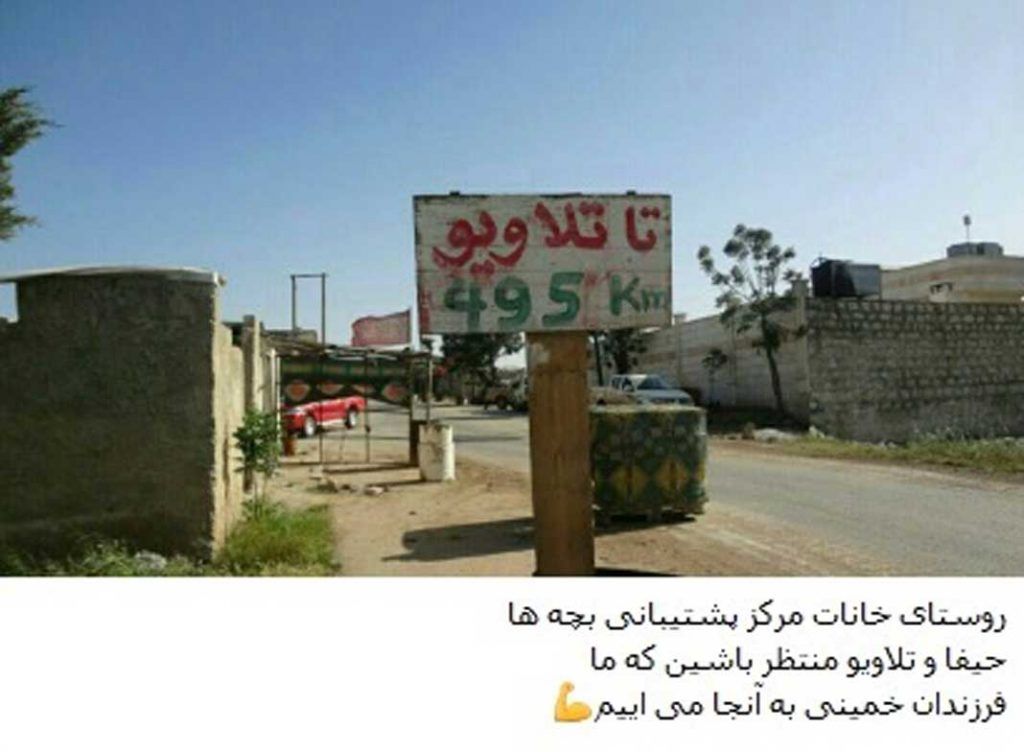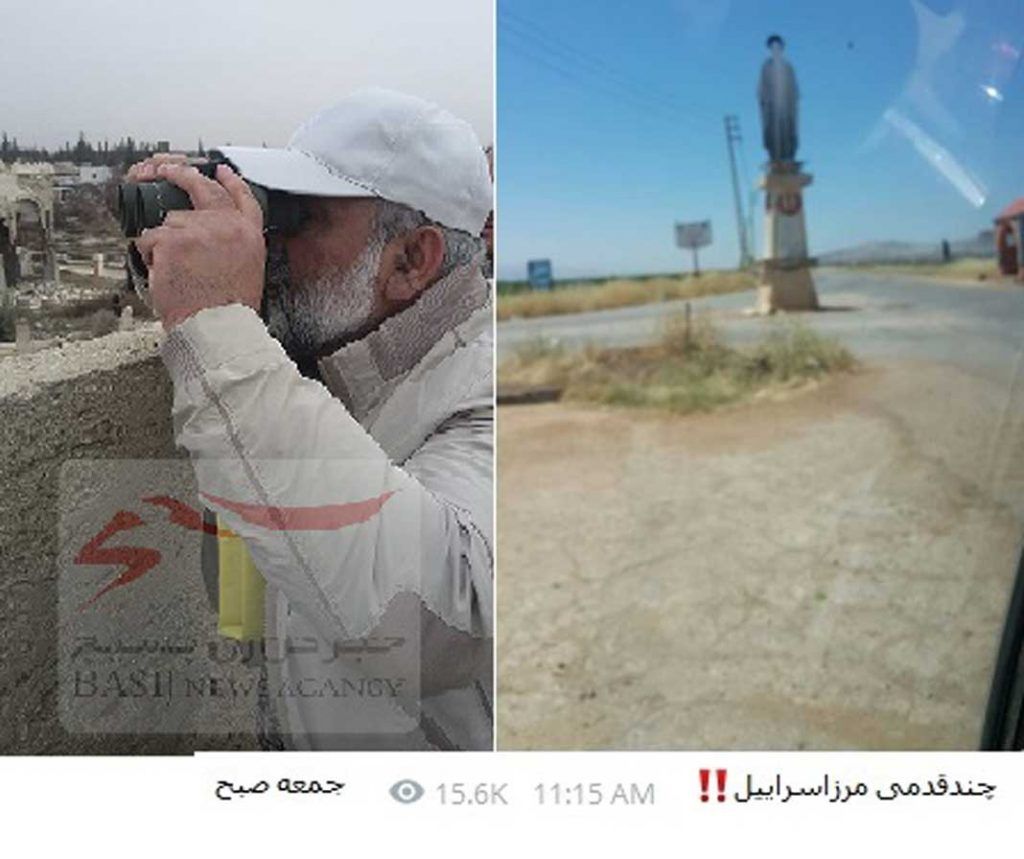
Friday, September 9, 2016
A few days ago the Israeli daily, Yedioth Ahronoth, reported on a joint effort by Iran and Israel to learn the fates of Ron Arad, the Israeli Air Force navigator who went missing in 1986 and four Iranian diplomats who also disappeared in Lebanon.

The Times of Israel had previously reported that researchers from the governments of Israel, Iran, Turkey, Egypt, Pakistan, Jordan, Cyprus and the Palestinian Authority were working together on a particle acceleration project [ the first Synchrotron-light for Experimental Science and Applications in the Middle East (SESAME)] at a laboratory in Jordan, with the estimated budget of 100 million US dollars. The situation is so dire that such rare events do not even constitute a dim light in an otherwise bleak relations between Iran and Israel.
The young and enthusiastic members of Nekhsa – an acronym for IRGC’s [Islamic Revolutionary Guards Corps] self-formed Islamic forces, who sacrifice themselves for Sayyed Ali Khamenei [Iran’s supreme leader] and Major General Qasem Soleimani [commander of IRGC’s Quds Force] – claim that they have gone to Syria purely on their own initiative to fight the Takfiris [ Sunni Muslims who accuse another Muslims of apostasy], and that they do not belong to any organization nor are being financially compensated for their services.

!Just wait! We the children of Khomeini are coming there
The Iranian commander of Ammar Brigade of Fatemiyoun Brigade [Afghan Shia militia formed in 2014 by Iran to fight in Syria – also known as Liwa Fatemiyoun ], Mostafa Sadrizadeh, also known by his jihad name Sayyed Ebrahim, was one of the first commanders of Nekhsa. He was killed during the Operation Moharram at Aleppo. That sealed the reputation of Nekhsa among the Basijis.
Does Iran have an independent and autonomous force in Syria?
Although Nekhsa claims to be a self-governing entity, the evidence proves otherwise. Nekhsa has more than thirty thousand members and communicates mainly through various channels on Telegram [ a messaging application with a focus on speed and security. Messages are heavily encrypted and can self-destruct. It can be used on desktop, tablets and phones]. Channels such as Pure Jihad has warned that “we will strike Haifa with rockets”. In addition to disseminating news on the developments in Syria, Nekhsa also functions as IRGC’s cyber army; it’s members routinely hack anti-religious and opposition websites critical of the Islamic Republic.
These Telegram sites have been active for two to three years and persistently post news stories about Hezbollah in Syria and Iranian martyrs. The Iranian fighters, regardless of where they were martyred, are referred to as defenders of the holy shrine of Sayyeda Zeinab [the grand-daughter of Prophet Mohammad] in official media. In Tir 1395 [July 2016], they announced that they were instructed by the Intelligence Protection Organization of the Army of the Guardians of the Islamic Revolution to stop publishing any photographs of IRGC forces in Syria. The warning by IRGC indicates that Nekhsa’s activity in virtual space is also being closely monitored.
The implicit role of Basij in organizing Nekhsa
Following a series of offensive successes by the army of Bashar al-Assad and the forces in charge of the defense of the shrines, on 6 Mordad 1395 [27 July 2016] a number of news organization linked to IRGC published a photograph of General Mohammad Reza Naqdi, head of the Basij, with a headline that he had travelled to the Golan Heights. The reports claimed that Naqdi had visited Quneitra in south west Syria and the Golan Heights at the Israeli border.

Reaching the Israeli border was a significant achievement for this paramilitary group. They launched their campaign against Israel with the chant: “we will strike Haifa with rockets”. They have also posted a number of photographs on their website revealing the boldness and zeal by which the forces defending the shrines are dreaming of destroying Israel.
Nekhsa unit is more than a military group. It is a well-organized coalition of volunteers and Basij forces who – with the blessings of IRGC – fight alongside Hezbollah on the side of Bashar al-Assad. At the same time, Nekhsa is positioning itself for a possible future battle against Israel.
In addition to its military operation, Nekhsa is also involved in a propaganda campaign and receives support from inside Iran. It produces t-shirts, leather wrist bands and watches with Nekhsa’s logo. Nekhsa supporters call themselves the “third generation of the revolution” and their role model is Qasem Soleimani.
https://www.youtube.com/watch?v=vNca29pkFeA
Reza Helali, Seyed Reza Narmiani and Mehdi Salahshur are well-known religious orators [singers – eulogists] whose music motivates and inspires the young Rambo-like Basijis. They consider themselves the voice of the new generation and distinguish themselves from classical religious eulogists such as Sadeq Ahangaran and Haj Mansour Arzi. One of Nekhsa’s favorite songs is “Bezar Manam Beram” [Allow me to go as well] which calls on Ḥusayn [Shia’s third Imam] and Ahl al-Bayt [the household of Prophet Muhammad] to help them to go to Syria.
In addition to the bewildering influence of heroic music on this young generation of velayatmadar [devotees of Vali-eh Faqih, meaning Iran Supreme Leader Ayatollah Khamenei], it alludes to their intimate relationship with the internet and cyberspace.The photographs on their web pages reveal their love of guns and the military, and their music is a combination of inspirational marching songs and religious eulogies. Heyat ol-Reza [the Basij and martyrs information office] is their base.
[responsivevoice_button voice=”US English Female” buttontext=”Listen to this “]

